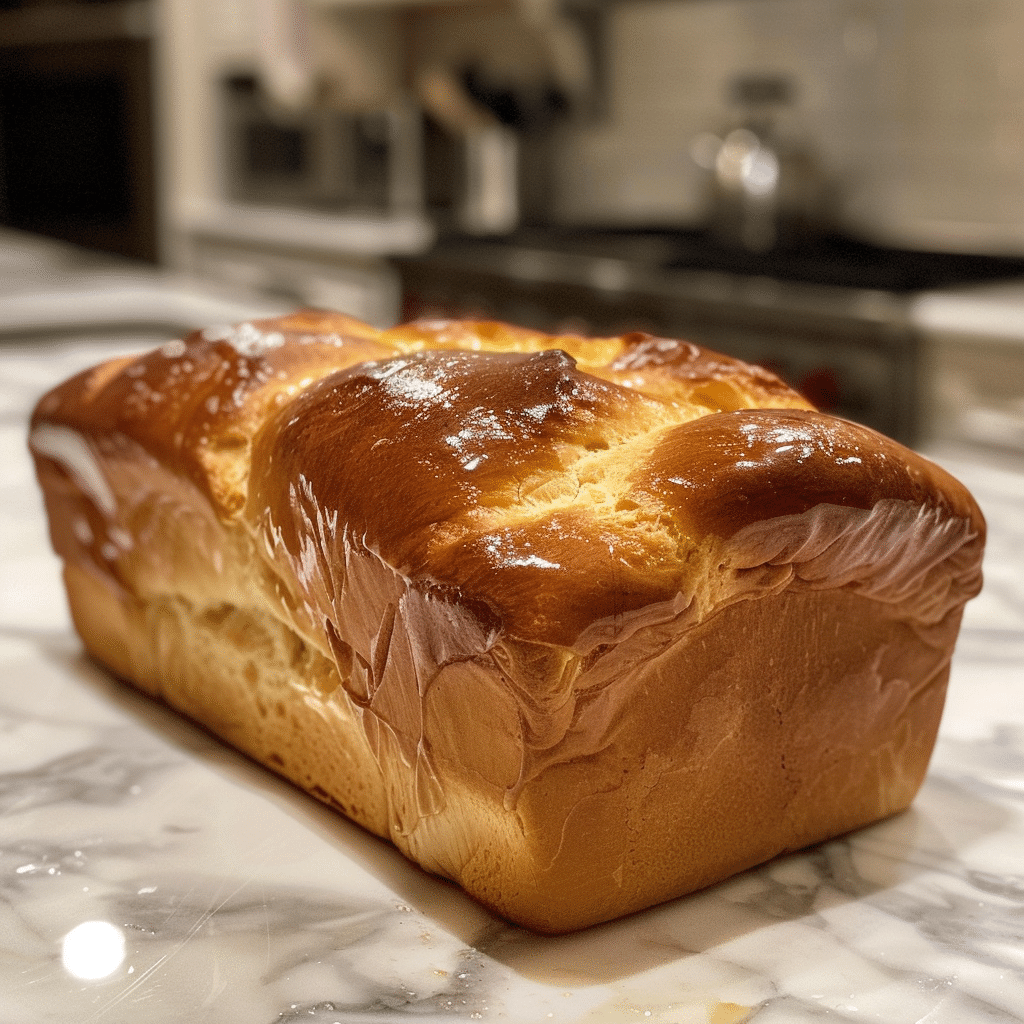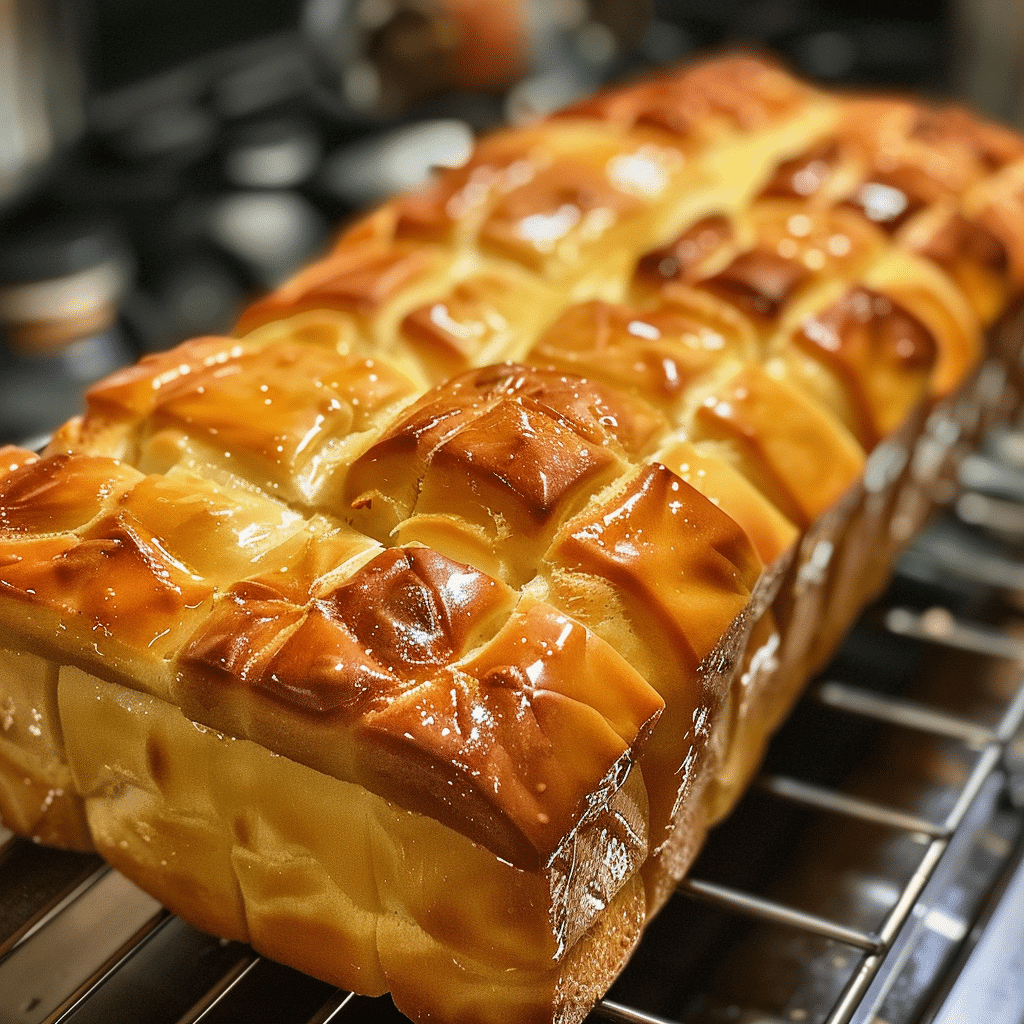Few things are as comforting as the smell of freshly baked bread, especially when it’s as tender and slightly sweet as Condensed Milk Bread. This recipe creates a beautifully soft loaf with a hint of creamy sweetness that melts in your mouth. It’s perfect for breakfast, tea time, or as a base for rich, buttery toasts. I once tried replacing regular milk with oat milk, and it still turned out soft and luscious — proof that this bread is as versatile as it is delicious. Whether you’re a seasoned baker or new to bread-making, this recipe is simple, rewarding, and sure to fill your kitchen with warmth.
Why You’ll Love This Recipe
You’ll love Condensed Milk Bread for its incredible softness and subtle sweetness. Unlike typical bread, the condensed milk gives the dough a creamy richness that results in a cloud-like texture. It’s versatile enough to enjoy on its own, with jam, or as a side to soups and stews. Plus, it stays fresh longer than most homemade loaves thanks to the moisture from the condensed milk. Whether baked as a pull-apart loaf or in rolls, every bite is light, buttery, and delightful.
Ingredients
(Tip: You can find the complete list of ingredients and their measurements in the recipe card below.)
All-Purpose Flour – The base of the dough, providing structure while staying soft and fluffy.
Sweetened Condensed Milk – Adds sweetness, moisture, and a rich, creamy flavor that sets this bread apart.
Whole Milk – Keeps the dough tender and enhances the soft texture.
Butter – Adds richness and a silky crumb to the finished bread.
Egg – Binds the dough and gives the bread a slightly golden color and tender chew.
Active Dry Yeast – Helps the dough rise, creating that perfect airy structure.
Sugar – Feeds the yeast and enhances the subtle sweetness.
Salt – Balances the flavors and prevents the bread from being overly sweet.
Warm Water – Activates the yeast and brings the dough together.
Directions
Start by activating your yeast. In a small bowl, combine warm water (about 110°F), sugar, and yeast. Stir and let it sit for 5–10 minutes until frothy. In a large mixing bowl, whisk together the condensed milk, warm milk, melted butter, and egg. Once combined, add the activated yeast mixture and stir until smooth.
Gradually add the flour and salt, mixing until a soft dough forms. Knead the dough on a lightly floured surface for about 10 minutes, or until it becomes smooth and elastic. If using a stand mixer, knead with a dough hook on medium speed for 7 minutes.
Place the dough in a greased bowl, cover it with a damp towel, and let it rise for about 1 hour or until doubled in size. Once risen, punch down the dough and divide it into equal portions. Shape into balls or roll into a loaf, then place in a greased baking pan. Cover again and let rise for another 30–40 minutes.
Preheat your oven to 350°F (175°C). Brush the top of the dough with milk or an egg wash for a shiny finish. Bake for 25–30 minutes, or until golden brown on top. Remove from the oven and brush with melted butter for an extra soft crust. Let it cool slightly before serving warm.
Equipment needed :
Must-Have Tools to Get Rolling
Here’s what you’ll want to have on hand:
Silicone Spatula – Durable, heat-resistant silicone spatula perfect for mixing, scraping, and spreading. Gentle on non-stick cookware and easy to clean.
Large pot – You’ll need this to boil the whole cabbage head and soften the leaves.
large bowl –Spacious, durable large bowl ideal for mixing, serving, or food preparation. Made from sturdy material and easy to clean.
Sharp knife – For coring the cabbage and slicing out the thick stem in each leaf. A paring knife works best.
Mixing bowl – A big bowl makes it easier to combine your meat and rice filling evenly.
Cutting board – For prepping cabbage leaves and rolling them like a pro.
9×13-inch baking dish – Ideal size to fit your rolled cabbage leaves snugly and prevent them from unraveling.
knife – A sharp, durable kitchen knife perfect for slicing, chopping, and dicing with ease
Servings and timing
This recipe yields 1 large loaf or 12 rolls and takes around 2 hours total, including rising and baking time. Preparation takes about 20 minutes, and baking takes 25–30 minutes.
Storage/reheating
Store leftover bread in an airtight container at room temperature for up to 3 days. For longer storage, refrigerate for up to 5 days or freeze for up to 2 months. To reheat, warm slices in the microwave for 10–15 seconds or in the oven at 300°F (150°C) for 5 minutes to restore softness.

Variations and Customizations
Coconut Condensed Milk Bread: Add shredded coconut to the dough and sprinkle some on top before baking for a tropical touch.
Honey Butter Glaze: Brush freshly baked bread with a mix of melted butter and honey for a glossy, sweet finish.
Filled Bread Rolls: Add a spoonful of chocolate, jam, or custard in the center of each dough ball before baking for a surprise filling.
Whole Wheat Version: Replace half of the all-purpose flour with whole wheat flour for a denser, nutty flavor.
Cinnamon Swirl: Roll the dough with a cinnamon-sugar mixture for a dessert-style twist.
Mini Milk Buns: Shape the dough into smaller rolls for a fun, snackable version.
Cheese Bread Variation: Add shredded mozzarella or cheddar for a savory-sweet balance.
Matcha Milk Bread: Add a teaspoon of matcha powder for an earthy, green-tea flavored loaf.
Braided Condensed Milk Bread: Divide the dough into three ropes and braid before baking for a beautiful presentation.
Cardamom Infusion: Add a touch of ground cardamom to the dough for a fragrant, Middle Eastern twist.
FAQs
Can I use instant yeast instead of active dry yeast?
Yes, skip the activation step and mix it directly into the dry ingredients.
Can I make this without eggs?
Yes, replace the egg with ¼ cup of milk for a similar texture.
What if my dough is too sticky?
Add flour one tablespoon at a time until it’s smooth and easy to handle.
Can I make this recipe in a bread machine?
Yes, follow the manufacturer’s instructions and use the “sweet bread” setting if available.
Can I reduce the sweetness?
Yes, cut the condensed milk by half and replace with regular milk.
How do I know when the bread is done?
It should sound hollow when tapped and have a golden-brown top.
Can I make it dairy-free?
Use coconut condensed milk, almond milk, and vegan butter for a dairy-free version.
How do I keep the crust soft?
Brush the top with melted butter right after baking and cover with a towel as it cools.
Can I make this dough overnight?
Yes, refrigerate the dough overnight after the first rise and bake the next day.
Can I use evaporated milk instead of condensed milk?
No, condensed milk is sweetened and thicker, which gives this bread its signature flavor.
Conclusion
Condensed Milk Bread is a simple yet luxurious recipe that transforms everyday ingredients into a cloud-like loaf bursting with flavor. Its soft texture and delicate sweetness make it perfect for breakfast, snacks, or dessert. Whether enjoyed warm from the oven or toasted the next day, it’s a treat that never fails to impress. This bread proves that homemade baking doesn’t have to be complicated — sometimes, the sweetest results come from the simplest recipes.
Hungry for more? Visit our website for full recipes and follow us on Pinterest for daily foodie inspo you’ll love to pin!
